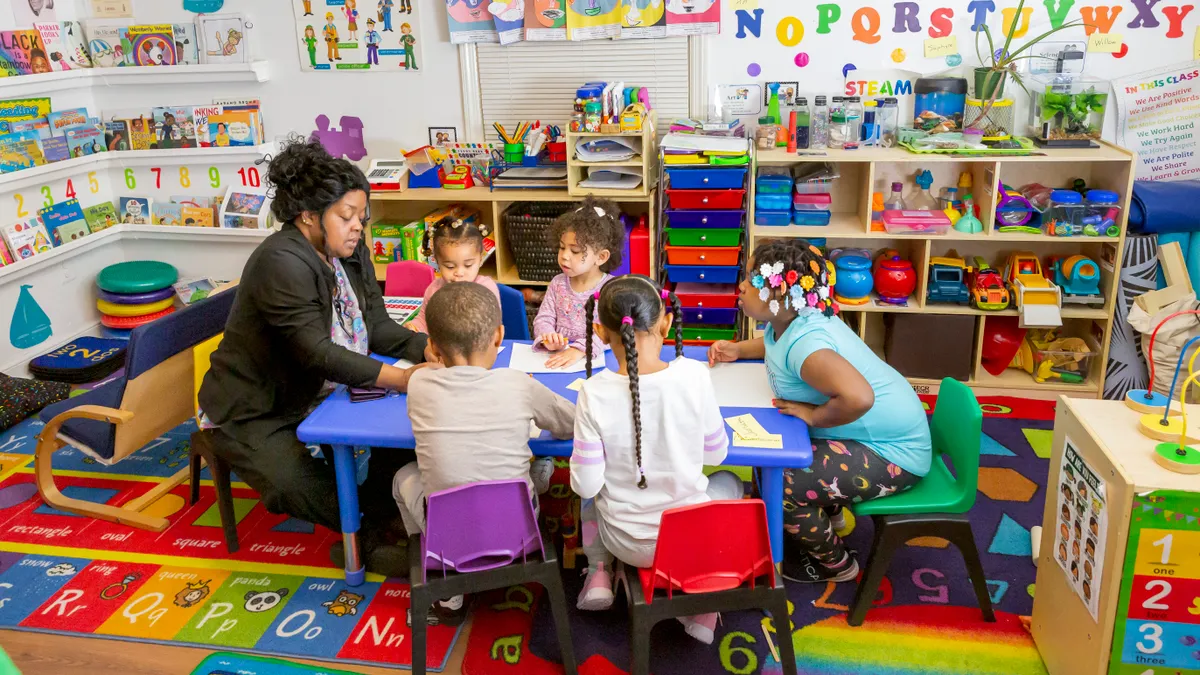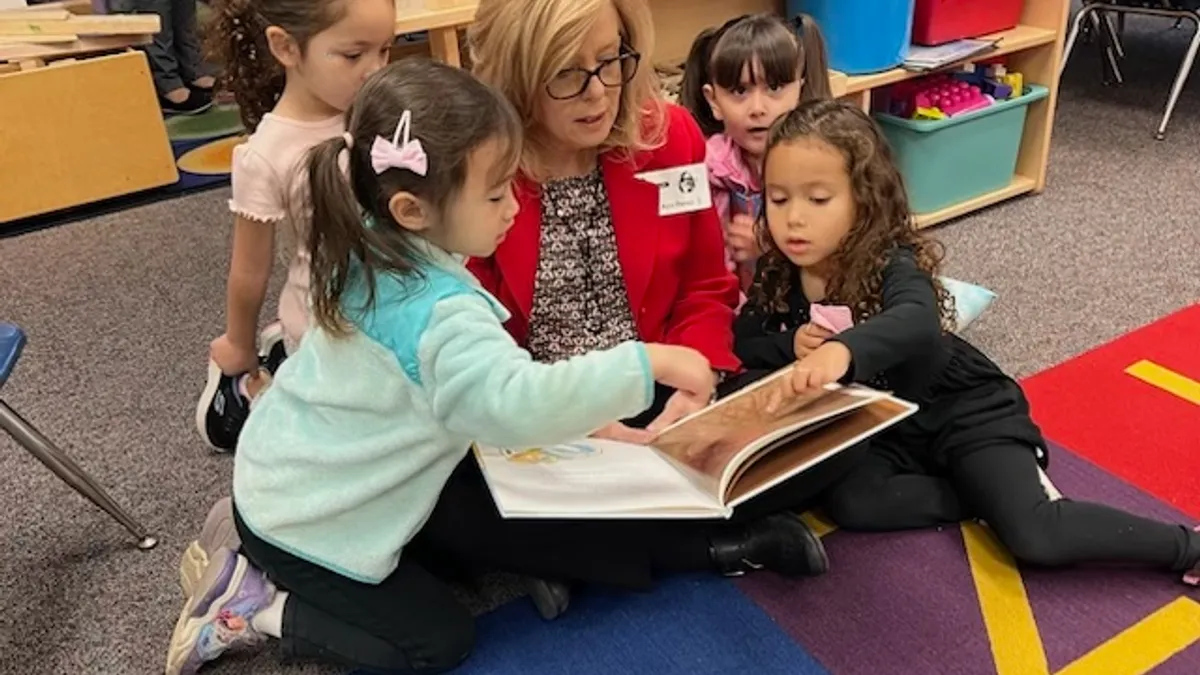Head Start classrooms are being forced to close after resignations from staff who have refused to vaccinate despite President Joe Biden’s mandate that takes effect Jan. 31. Others are anticipating closures, program changes, or reduced student enrollment in response to limited numbers of staff willing to get inoculated.
“I’ve been running understaffed all year long,” said Karen Knowles, program director of Head Start in Minot, North Dakota. “So losing them to the vaccine mandate is making me close classrooms.”
Knowles’ early childhood education program currently has 21 classrooms. Following the holiday break and leading up to the Jan. 31 deadline, Knowles anticipates only 12 will remain open. The majority of those who have resigned in light of the vaccine requirement are support staff, such as teaching assistants and part-time aides.
Similar staff turnover is widespread in the state, according to Allison Driessen, president of the North Dakota Head Start Association. "We are an industry that is already struggling to find qualified staff," Driessen said. And the vaccination mandate "pushes out the good staff that we have and interrupts education in the middle of the school year."
Jan. 31 vaccine deadline looms
Biden’s vaccine mandate, a part of his administration’s COVID-19 action plan, required the Department of Health and Human Services, which houses the Office of Head Start, to issue an interim final rule that took effect Nov. 30. Under that rule, all Head Start staff and volunteers must receive their initial dose by the end of January with exemptions and test options for religious or medical reasons.
Those who object on philosophical, political or other grounds cannot get a testing option in place of vaccination, as per the rule that is still undergoing a comment period.
“A vaccination requirement and consistent and correct mask use are critical in mitigating SARS-CoV-2 transmission and keeping Head Start programs open,” according to the interim final rule, which aims to increase vaccination rates and reduce program closures triggered by spread of the virus.
“Program closures impede Head Start families from participating in the workforce, impose financial hardship on low wage workers who may not have paid time off to care for children who are in quarantine, create instability for children and families who depend on the Head Start program, and delay a full economic recovery for the nation,” it adds.
However, closures as a result of understaffing have worried Head Start programs across the nation since the rule came out. A nationally representative survey of Head Start directors, conducted by the National Head Start Association following the rule’s publication, found “the biggest concern is workforce attrition and, as a result, the ability to keep classrooms open to serve children and their families,” said Tommy Sheridan, NHSA deputy director, in an email.
With a comment period on the interim final rule coming to a close in just over two weeks, Driessen and others have suggested potential changes, including: an implementation date after the end of the 2021-22 school year; a test option for staff unwilling to get vaccinated but who do not have a religious or medical exemption; and localized decision-making to allow for flexibility based on community preference and need.
'Does the Office of Head Start understand what’s happening?'
Meanwhile, Head Start directors are scrambling. “Most of the questions and comments and stories revolve around one question: ‘Does the Office of Head Start understand what’s happening?’” Sheridan said.
The organization estimates 20% of programs have less than half their staff vaccinated, about a third have 50% to 70% of staff vaccinated, and another third have 70% to 90% vaccinated. Only 16% of programs have more than 90% of staff vaccinated.
As a result, 26% of programs anticipate losing more than 30% of their staff, 16% of programs anticipate losing 20% to 30%, and another 29% anticipate losing 10% to 20% of their staff. The remaining 31% of programs estimate losing less than 10% of staff if the mandate is implemented Jan. 31.
If those predictions are accurate, Head Start programs are set to lose, on average, 22% of their workforce, or nearly 60,000 staff.
In addition, 50% of respondents to NHSA’s survey, set to be released later this week, said at least some classrooms would need to close if the vaccination mandate took effect Jan. 31, which would amount to more than 1,300 classrooms closing. That number could be significantly higher if some of the one-third of respondents who said “unsure” end up needing to shut down classrooms as well.
“Time isn’t our friend here,” Sheridan said. “One director shared they have maybe 3 or 4 departures per year on average. In the last 45 days, they have lost 10 staff and are close to closing rooms.”
‘Caught between a rock and a hard place’
Local orders or legislation banning vaccination requirements in some states further complicate the situation with the federal vaccine mandate. Florida, for example, is among states where the governor has banned employers from requiring a shot as a condition for work.
Stephen Hegarty, a spokesperson for Pasco County Schools in Florida, said his district has notified staff of the different requirements, but the fallout is unpredictable since the deadline for compliance hasn’t hit yet.
“To be completely honest we are caught between a rock and a hard place, and we are trying to do the right thing by our kids and employees by not angering our state officials or federal officials,” Hegarty said.
The district risks losing state funding if it mandates a vaccine, while Head Start federal funding hangs in the balance if programs fail to comply with Biden’s mandate.
Caught in the crossfire, Head Start programs are losing agreements with school districts that are refusing to mandate vaccinations for staff.
“Head Start has worked so hard over the last few years to build relationships and partnerships with public schools,” Sheridan said. “Now these relationships are at risk due to the vaccine mandate and masking rule.”
Sheridan pointed to one director who said they may drop 75% of their Head Start slots due to school districts refusing to require staff to get vaccinated. “We heard the exact same thing from another program where 80% of the slots are school partner slots, which would have to stop immediately once the mandate goes through,” Sheridan said.
Programs brace for long-term impact
The fallout could have a long tail. North Dakota’s Driessen worries the mandate will derail the programs’ ability down the road to recruit staff, including substitutes, volunteers and interns.
Knowles hopes the closures in her program are temporary, but that would mean hiring 24 vaccinated and qualified staff in short order. “And in this job market and climate, it just seems like an impossible task,” she added.
Limited staff amounts to limited numbers of students with access to early childhood education. Most of the families impacted in Knowles’ program are among the ones who need it the most: children from low-income, homeless, or foster care families. Driessen worries fewer students could lead to lesser funds in the future.
“The main mission of Head Start is school readiness for kids,” Driessen said. “So we are not fulfilling our promise of getting kids ready for school.”
Despite multiple attempts to contact the Office of Head Start, the Department of Health and Human Services, and the North Dakota Department of Human Services, the agencies could not be reached for comment. The U.S. Department of Education declined to comment by the time of publication.







 Dive Awards
Dive Awards












